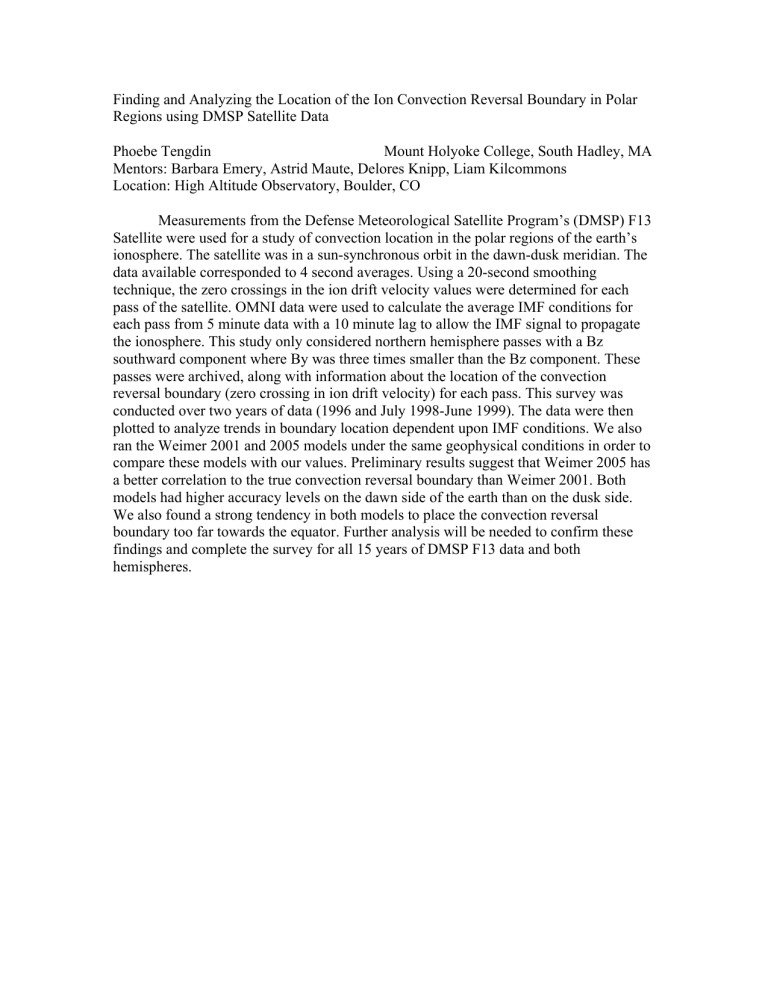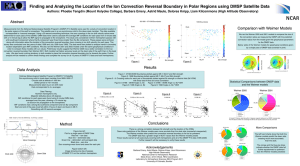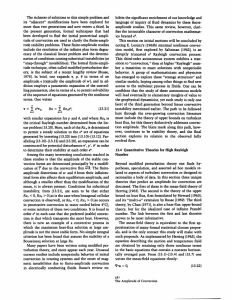Finding and Analyzing the Location of the Ion Convection Reversal... Regions using DMSP Satellite Data

Finding and Analyzing the Location of the Ion Convection Reversal Boundary in Polar
Regions using DMSP Satellite Data
Phoebe Tengdin Mount Holyoke College, South Hadley, MA
Mentors: Barbara Emery, Astrid Maute, Delores Knipp, Liam Kilcommons
Location: High Altitude Observatory, Boulder, CO
Measurements from the Defense Meteorological Satellite Program’s (DMSP) F13
Satellite were used for a study of convection location in the polar regions of the earth’s ionosphere. The satellite was in a sun-synchronous orbit in the dawn-dusk meridian. The data available corresponded to 4 second averages. Using a 20-second smoothing technique, the zero crossings in the ion drift velocity values were determined for each pass of the satellite. OMNI data were used to calculate the average IMF conditions for each pass from 5 minute data with a 10 minute lag to allow the IMF signal to propagate the ionosphere. This study only considered northern hemisphere passes with a Bz southward component where By was three times smaller than the Bz component. These passes were archived, along with information about the location of the convection reversal boundary (zero crossing in ion drift velocity) for each pass. This survey was conducted over two years of data (1996 and July 1998-June 1999). The data were then plotted to analyze trends in boundary location dependent upon IMF conditions. We also ran the Weimer 2001 and 2005 models under the same geophysical conditions in order to compare these models with our values. Preliminary results suggest that Weimer 2005 has a better correlation to the true convection reversal boundary than Weimer 2001. Both models had higher accuracy levels on the dawn side of the earth than on the dusk side.
We also found a strong tendency in both models to place the convection reversal boundary too far towards the equator. Further analysis will be needed to confirm these findings and complete the survey for all 15 years of DMSP F13 data and both hemispheres.






